This post is about my visit to Loew Vineyards Wine Camp. Check out my vlog from the day!
Rachel Lipman: Granddaughter of Loew Vineyards Founder
I met Rachel Lipman, Loew Vineyards’ current winemaker, at the East Coast Wine Summit held at The CrossVines, a new dining and golf destination in Poolesville, Maryland. I first learned about Rachel when she was honored as one of the Terps 30 under 30. Go Terps!
She graciously invited me to the Loew Vineyards Wine Camp, an event that she hosts twice a year to showcase Loew Vineyards’ wines and meads, both old and new.
The History of Loew Vineyards: A Family Tradition of Winemaking
William (Bill) and Lois Loew (Rachel’s grandparents) bought a 37-acre parcel in Frederick County in March 1982, planted vines, and had their first vintage in 1986. The family’s history of fermenting things dates back to mid-1800s Poland when their family began making mead.
The family owned more than five thriving meaderies and distributed their meads throughout Europe until the start of World War II.
Sadly, The Loew family and their meaderies were lost during the Holocaust and William was one of the few surviving members of his large extended family. After the war, Bill emigrated to America where he met Lois and started a family.
Loew Vineyards is located in Mt. Airy, Maryland, in Frederick County. Just 45 minutes from Baltimore, it’s a straight shot down Liberty Road.
Loew Vineyards Wine Camp
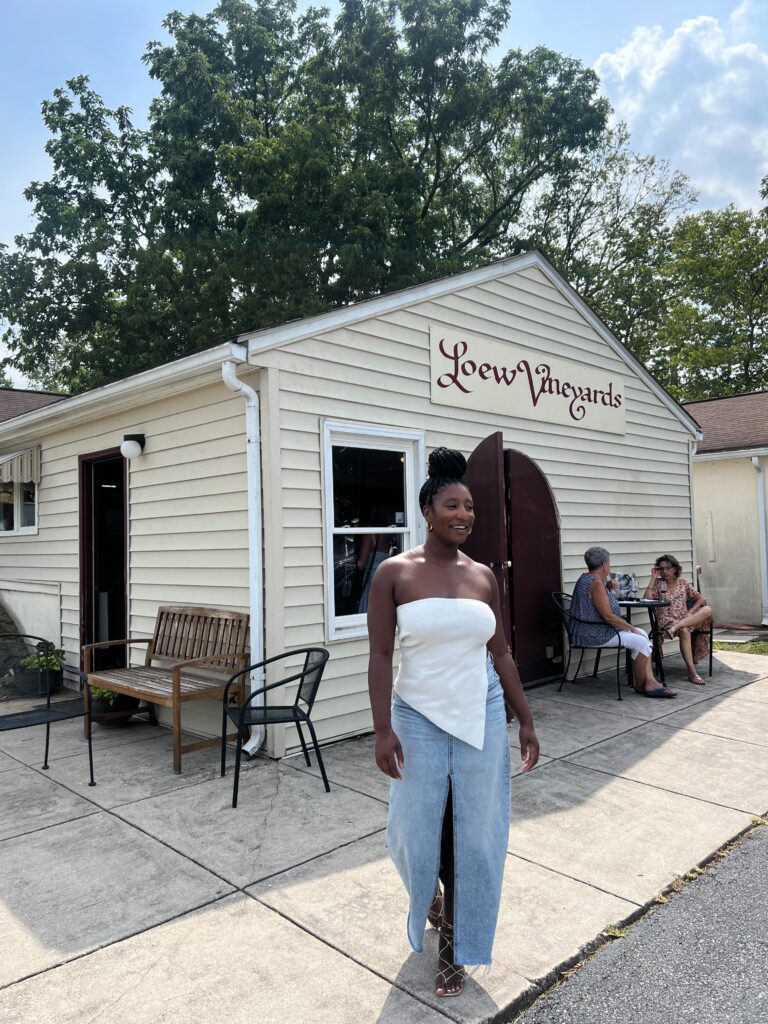
My partner and I arrived on a dreary and chilly morning, a nice reprieve from the scorching hot summer days we were experiencing.
We were greeted by Rachel and her adorable dog, Brixton. The camp was set up outside, and included in the tickets were three glasses and a tasting notebook.
Wine Camp is an intimate group, which gave us a chance to connect with everyone and ask all our questions to Rachel.
Grüner Veltliner Three Ways
We started with a comparative Grüner Veltliner. Grüner Veltliner is a white wine grape known for producing refreshing wines with vibrant acidity. It is predominantly grown in Austria, particularly in the Wachau region, where it thrives in the terraced vineyards along the Danube River.
Rachel makes Grüner in a few different styles – a traditional white wine, a skin-contact or orange wine, and most interestingly, a mead.
I enjoyed the crisp, refreshing traditional-style Grüner and think it’s a great substitute for Sauvignon Blanc, which doesn’t grow quite well in Maryland.
Orange wine is made just like red wine where the wine is fermented on the skin. The skin maceration on the skins of white grapes gives the wine an orange-ish color as well as tannin in the mouthfeel.
The skin contact Marglit had tropical notes and a nice structure that would go well would be great with food.
Melo was the final mead from Grüner Veltliner. It is a dry pyment, a specific type of mead that is a blend of grapes and honey. It drank very similarly to wine, with intense tropical and honey notes.
Melo is a tribute to Elimelech Löw, nicknamed Melo, who was the older brother of our co-founder, William Loew. It is believed that Elimelech perished in the Holocaust.
Throughout the day, Rachel shared fond memories of her family and how she hopes to honor them through the Tribute series of wines.
Chardonnay
Next up was the Chardonnay. I had tasted the 2021 Chardonnay at the East Coast Wine Summit when I met Rachel, and it was as delicious as I remembered. I even bought a bottle to take home.
It was balanced seamlessly with flavors of apple, lemon, and subtle vanilla and spice from 9 months in neutral oak barrels.
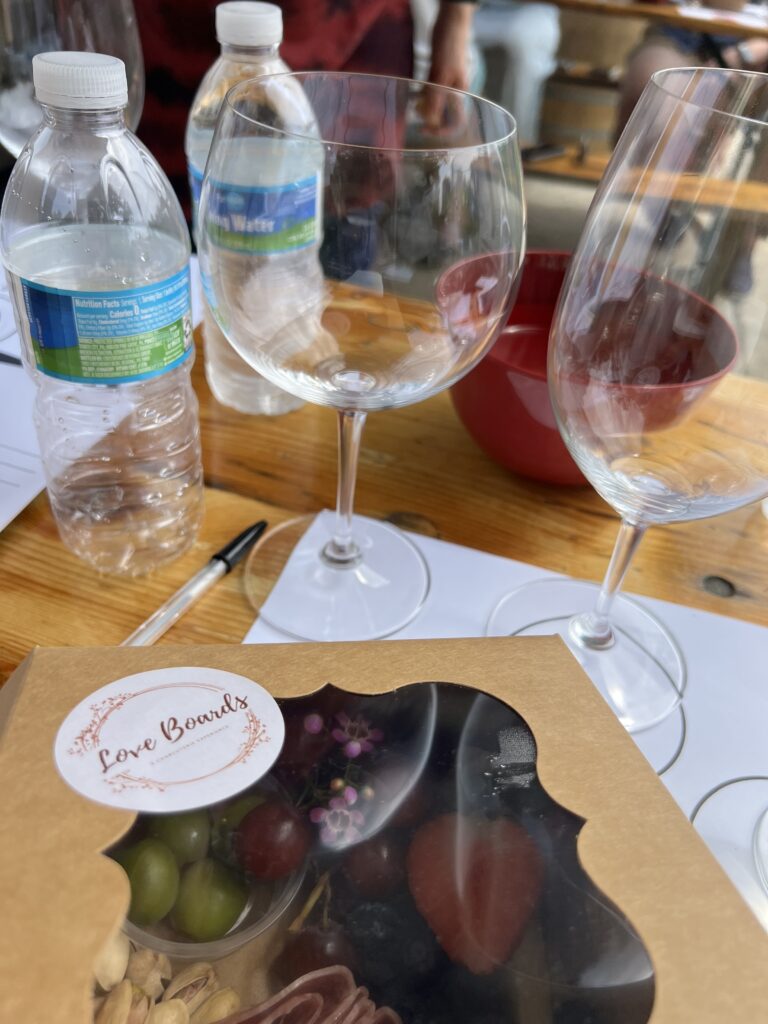
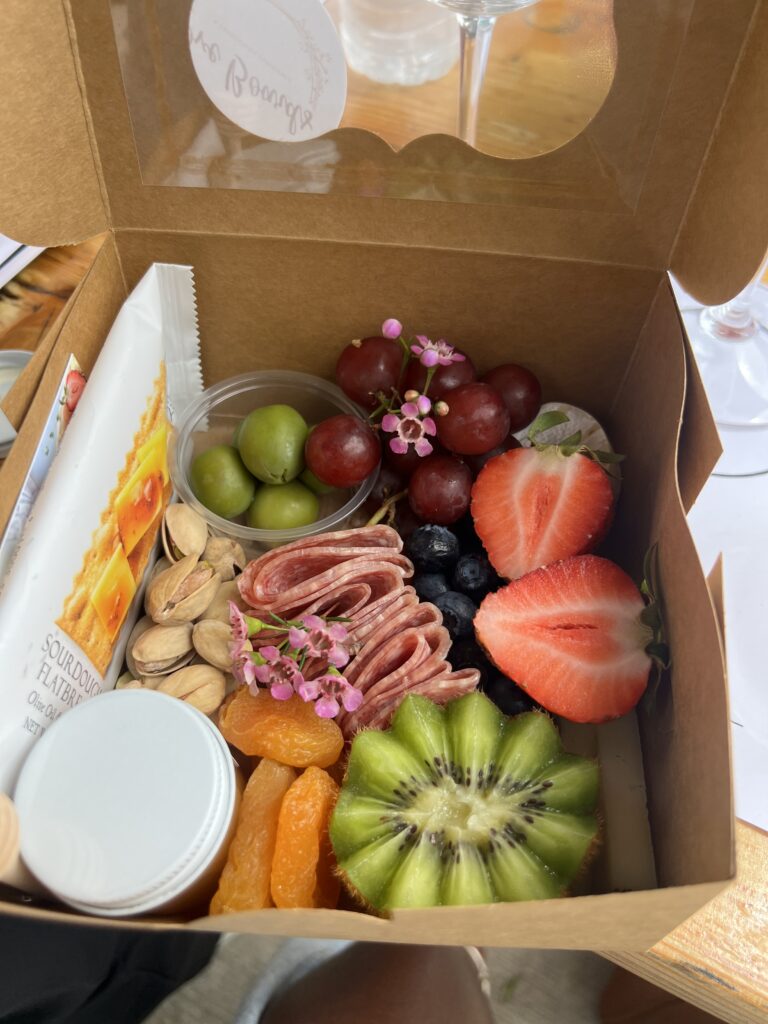
Lunch was charcuterie boxes from a local company, Love Boards. There was cheese, fruit, honey, and meat all packed in the cutest box.
I enjoyed a glass of the Barbarea Nouveau with lunch. It’s made and named after Beaujolais Nouveau, with carbonic maceration that makes it juicy and bursting with red fruit flavor.
More Meads
After lunch, we transitioned into the meads. It was interesting to learn that mead has a rich history in Poland that dates back to ancient times.
Despite her grandfather urging her not to make mead as it wouldn’t live up to his memories, Rachel insisted on making mead from Maryland wine and local Maryland honey. We’re sure her grandfather would be proud of her award-winning mead.
The Tasting Room
While the day started briskly, the sun came out after lunch and, along with several wines and honey (or so wines at this point), so did the bees. We moved indoors to the tasting room for the remainder of the camp.
The bees were buzzing, and so was the vineyard. Live music had started at the winery, and groups were scattered around the property enjoying the music and wine tasting.
The tasting room is quite small, with a few small round tables and one longer picnic table. It is directly connected to the winemaking facility, which houses a handful of tanks and a barrel room.
Rachel expressed her excitement about building a new tasting room in the next two years. This will allow her to host more guests and increase the wine production space and barrel room.
The Final Wines at Wine Camp
We ended the day with tasting through Cabernet Franc, Malbec, and Cabernet Sauvignon.
I love Cabernet Franc and all its fruit and green pepper glory. We experienced how Maryland terroir and clonal selection impacted the wines with two barrel samples of CL 613 and CL 214.
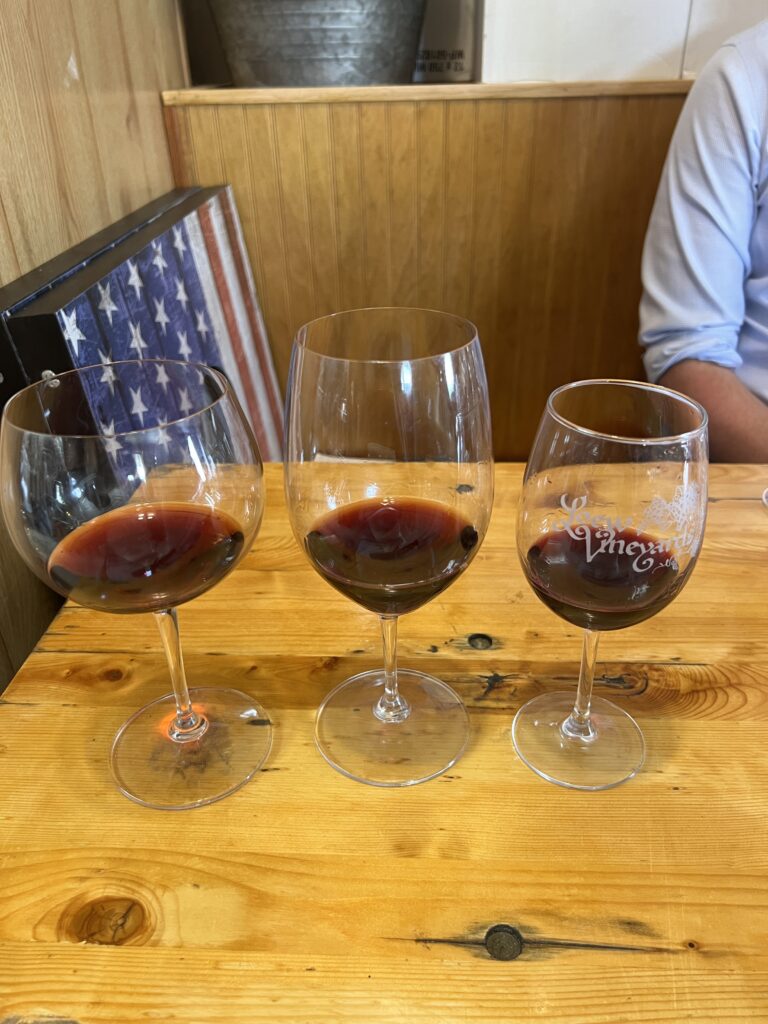
Maybe the highlight of the day was the Cabernet vertical tasting. We were lucky to taste the 1993, 2001, and 2002 vintages. Yes, a 1993!
Cabernet is not a grape that typically ripens well in Maryland. According to Rachel, Cabernet ripens 2 out of 10 years in Maryland, except for a specific vineyard site that ripens every year. The vineyard and estate located in Chesapeake City, Maryland, is currently for sale for $13 million. We joked about all pooling our money to purchase it.
The 1993 was made by Rachel’s grandfather. Despite being 30 years old, with much of the primary fruit gone, the wine still had structure and lots of dried fruit and earthiness.
The 2001 was my favorite; it had the perfect balance between fruit and earthiness with a velvety mouthfeel.
Finally, the 2022 was young, bold, and tannic. I would love to see how this tastes 5 and 10 years from now.
Conclusion: A Memorable Experience at Loew Vineyards Wine Camp
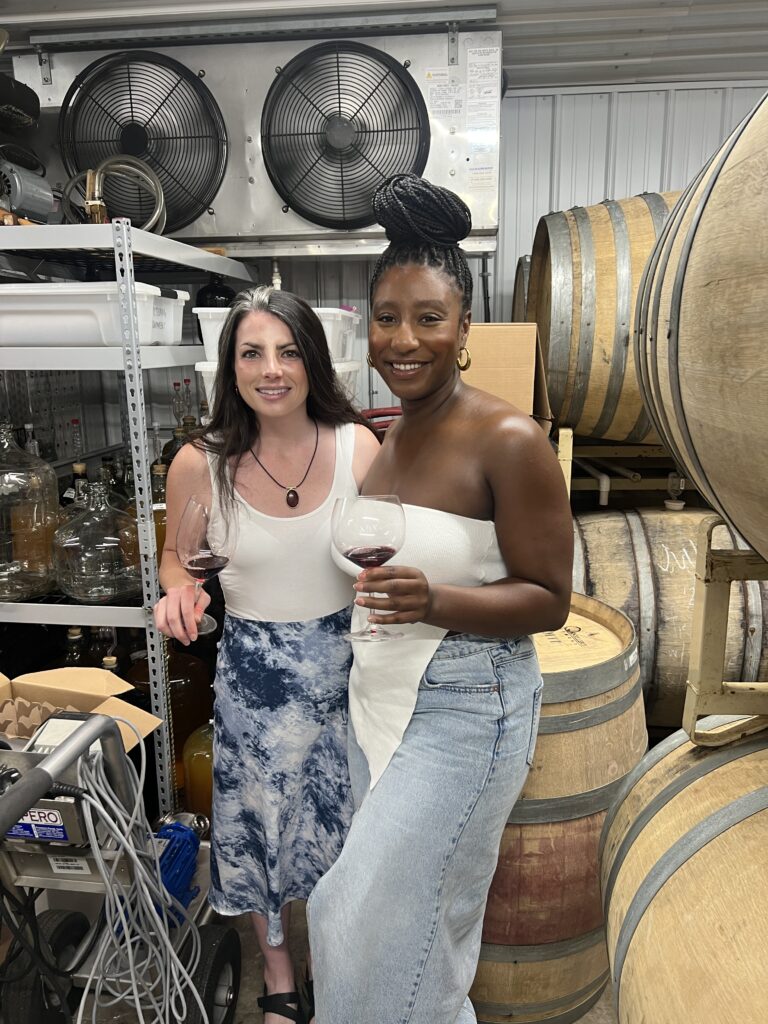
I had the best time at Loew Vineyard Wine Camp. Rachel was bursting with pride about her family’s history and the wines she is crafting. She wasn’t afraid to share the challenges she has faced and all the things she is learning along the way.
I am so excited for the future of Loew Vineyards.
If you’re a wine enthusiast and interested in learning more about Maryland wine, I recommend visiting Loew Vineyards and staying in the loop to find out about the next wine camp.
